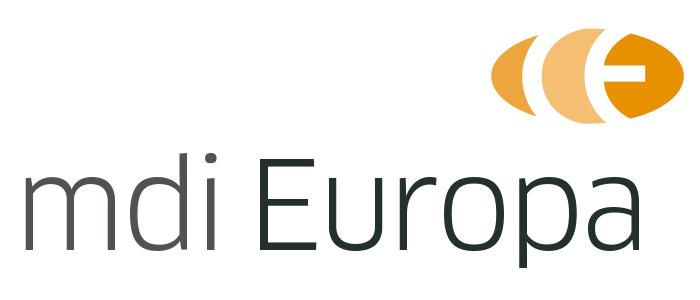You may already have asked yourself how Regulation (EU) 2017/745 on medical devices (MDR) affects the Technical Documentation requirements for your products. This is a very complex question and cannot be easily answered as it depends on many aspects.
Base case
To provide a more practical approach, mdi Europa has set up a brief case study to make clear what additional aspects should be addressed compared to what is already required under the Medical Devices Directive 93/42/EEC (MDD) and Active Implantable Medical Devices Directive 90/385/EEC (AIMDD): Assume you are a medical device manufacturer of a class IIb orthopedic implant, which will be “up-classified” to III under the MDR – what aspects would have to be regarded? Please find below some considerations.
Technical Documentation and product description
Especially manufacturers of high risk devices should be aware that the corresponding documentation will be reviewed with much more attention and scrutiny.
The MDR defines various documentation requirements, which will be new for all manufacturers, not only for those who produce class III devices. However, especially manufacturers of high risk devices should be aware that the corresponding documentation will be reviewed with much more attention and scrutiny – compared to low-risk products. For example, annex II of the MDR demands that manufacturers include the principles of operation or mode of action of a device. The reader shall be able to understand how exactly a product works. This refers to the claim of the Regulation to provide a higher level of control.
Moving on this point, a Technical File under the MDR must include a rationale why a product is a medical device and also justify in detail which risk class is applicable. Furthermore, a manufacturer has to give reference to previous and similar device generations and provide extended design process details including information about suppliers and subcontractors. By including these requirements, the makers of the Regulation oblige manufacturers not only to consider all risk classes that may apply and present a well-founded decision.
They also ensure that medical device producers define design procedures and gather market details, which aim to support or can be fed back for example into the Post-Market Surveillance (PMS) system. Especially manufacturers of high-risk devices should expect higher scrutiny against these points and amend their documentation accordingly.
Technical Documentation and General Safety and Performance Requirements
Another important change comes with the new General Safety and Performance Requirements (SPR). Although valid for all classes of devices, this change may prove to be particularly critical for class III device producers. In this context, the MDR also provides for Common Specifications (CS). CS may apply for areas where no harmonized standards can be referred to, to demonstrate compliance with the SPR. Newly defined CS may require additional documentation. Especially high-risk device manufacturers should prepare for an enhanced level of regulation in comparison to lower device classes.
Against this background, you should also review your labeling. Manufacturers must include new elements on their labels, e.g. the UDI and the medical device symbol. Also, depending on the device history, your Notified Body (NB) might judge the current information on residual risk, undesirable side effects, clinical benefits, etc. as insufficient.
Clinical evaluation under the MDR
Manufacturers are generally expected to include more own clinical data to provide sufficient clinical evidence.
Next, the requirements for clinical evaluation have changed under the MDR. What was available in the MEDDEV 2.7/1, rev. 4 guidance document under the MDD is now largely included in the MDR and thus becomes a legal obligation. One implication is that it will become much more difficult to base an evaluation on equivalence. Manufacturers are generally expected to include more own clinical data to provide sufficient clinical evidence.
Continuing the point above, the MDR makes clinical investigations mandatory for implantable and class III devices unless for certain exceptions. NBs will carefully review if the conditions for these exceptions are fulfilled. In addition, under the MDR, the NB of a class III device manufacturer, will send a clinical evaluation assessment report to an expert panel for an additional review.
Summary of Safety and Clinical Performance
A completely new MDR requirement is that manufacturers of high-risk medical devices must prepare a Summary of Safety and Clinical Performance (SSCP). The document is reviewed by the NB and shall be publicly available. The SSCP is intended as a tool for the public “to make informed decisions about the identified medical device” (Source: European Patients Forum).
Technical Documentation and PMS
The MDR provisions regarding PMS also require amendments to your Technical Documentation. Medical device manufacturers have to compile various documents, which have not been provided for under the MDD (e.g. PMS Plan). Simultaneously, the MDR introduces the obligation to compile Periodic Safety Update Reports (PSUR). The PSUR is basically a summary of analysis results from PMS data. A PSUR is required for class IIa/b and class III devices. Manufacturers of high-risk devices must set up the reports on an annual basis and the documents are reviewed and evaluated by the NB.
PMS and PMCF
Further above, we looked at the generation of clinical data for an appropriate set-up of the clinical evaluation under the MDR. Against this background, the MDR also includes certain requirements on PMS and PMCF in annexes III and XIV. These are now general provisions for all manufacturers and not necessarily new. Annex II of the MDD already obliges manufacturers to present a PMCF Plan and results of PMCF. Nonetheless, the MDR is much more explicit in this regard. If, in the present case, the manufacturer cannot rely on own clinical data and there is, for example, a critical incident history, the NB might require to launch a PMCF study. This in turn must be included in the PMCF plan and PMCF evaluation report, which are required components of a Technical File.
The last amendment to be mentioned here refers to a new requirement for implants, the implant card. The implant card contains specific product details, which are intended “for the purpose of making it available to the particular patient who has been implanted with the device, by any means that allow rapid access to that information” (Source: MDR).
Conclusion
Looking at the discussion above, it becomes evident that the implications of the MDR on a manufacturer’s Technical Documentation are complex – each case must be regarded individually and carefully. Economic operators should also bear in mind that the MDR is not only about Technical Documentation. There are many more aspects that have to be considered to comply with the new Regulation.
Sources: MDR, European Patients Forum
See links below for further information on Technical Documentation
Visit our page “Technical File Compilation”.
Visit our Supporting Information Section on MDR / IVDR.
Should you require assistance in complying with the MDR requirements or on specific questions, please don’t hesitate to get in touch.





